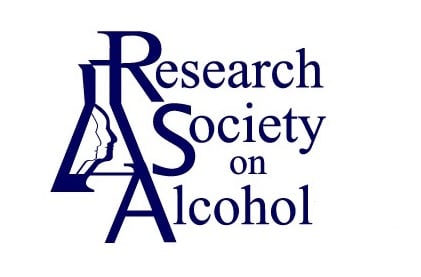Journal list menu
Export Citations
Download PDFs
Issue Information
Articles of Public Interest
Biochemistry, Pharmacology, Physiology and Metabolism
Protective Effects of Diallyl Sulfide Against Ethanol-Induced Injury in Rat Adipose Tissue and Primary Human Adipocytes
- Pages: 1078-1092
- First Published: 17 April 2017
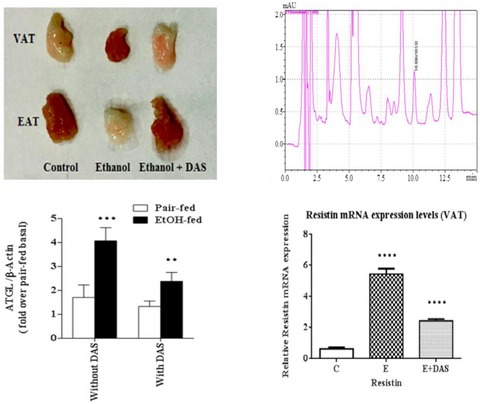
The study was conducted to investigate the effects of garlic derivative diallyl sulfide in ameliorating the effects of alcohol on adipose tissue. Results indicated that diallyl sulfide treatment was effective in reducing oxidative stress, endoplasmic reticulum stress, and inflammation caused due to alcohol intake. Further, diallyl sulfide could also improve lipogenesis in adipose tissue that was altered due to ethanol consumption. The study results implicate a potential therapeutic role for diallyl sulfide in treating alcohol induced adipose tissue injury.
Human and Animal Genetics
Independent and Interactive Effects of OPRM1 and DAT1 Polymorphisms on Alcohol Consumption and Subjective Responses in Social Drinkers
- Pages: 1093-1104
- First Published: 04 April 2017
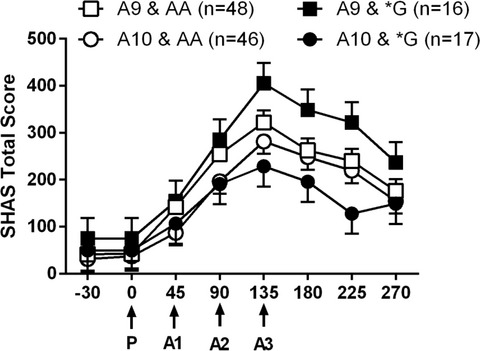
The current study in social drinkers examine whether subjective responses to alcohol were influenced by epistatic interactions between the G-allele of OPRM1 A118G polymorphism, and a DAT1 VNTR polymorphism that results in alleles with 10 (A10) versus 9 or lesser repeats (A9). Subjective high assessment scale (SHAS) scores after alcohol consumption were highest in G and A9 carriers, and lowest in G and A10 carriers. Subjective responses in G carriers may be dependent on which DAT1 VNTR is also present.
Neuroscience
Chronic Alcohol Exposure Differentially Alters One-Carbon Metabolism in Rat Liver and Brain
- Pages: 1105-1111
- First Published: 30 March 2017
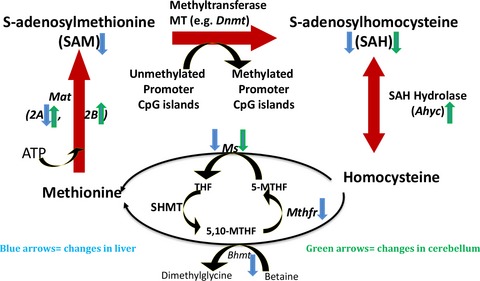
Chronic ethanol exposure decreased SAM and SAH levels and SAM/SAH ratio in liver. However, in cerebellum the SAM levels did not change, while SAH levels decreased and SAM/SAH ratio increased. These results indicate a decrease and an increase of “methylation index” in liver and cerebellum respectively that may be associated with pathophysiology of alcoholism.
A Preliminary Investigation of the Effect of Acute Alcohol on Dopamine Transmission as Assessed by [11C]-(+)-PHNO
- Pages: 1112-1119
- First Published: 19 April 2017
![A Preliminary Investigation of the Effect of Acute Alcohol on Dopamine Transmission as Assessed by [11C]-(+)-PHNO](/cms/asset/e75360da-c18c-46c3-aafd-9f64a21ee44f/acer13403-toc-0001-m.jpg)
Using the novel PET radiotracer, [11C]-(+)-PHNO, our preliminary investigation found that acute consumption of alcohol was not associated with robust changes in tracer binding in the striatum and D3-rich extra-striatal regions, and indicator of dopamine (DA) release. Instead, we found that changes in tracer binding may be influenced by blood alcohol levels. This study supports the need to further explore the effect of lower stimulating doses of alcohol on DA transmission.
Epidemiology, Diagnosis and Comorbidity
Dietary Patterns and Alcohol Consumption During Pregnancy: Secondary Analysis of Avon Longitudinal Study of Parents and Children
- Pages: 1120-1128
- First Published: 19 April 2017
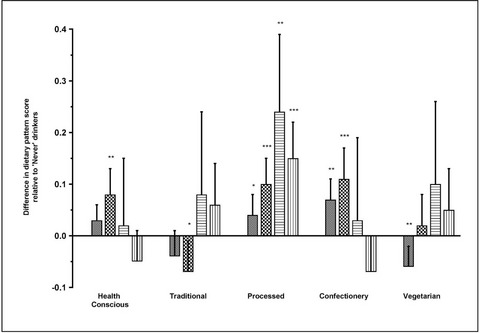
Alcohol intake and inadequate maternal nutrition during pregnancy are independently associated with adverse fetal outcomes. We conducted a secondary analysis of data from a UK birth cohort and explored associations between maternal dietary patterns and alcohol consumption during pregnancy. Two important components of health behaviour during pregnancy appear to be related; greater consumption of processed foods associated with heavier alcohol consumption, and healthier dietary choices associated with light to moderate alcohol intake. These relationships may have implications for fetal health.
Does a Crossover Age Effect Exist for African American and Hispanic Binge Drinkers? Findings from the 2010 to 2013 National Study on Drug Use and Health
- Pages: 1129-1136
- First Published: 19 April 2017
Alcohol Use Disorders and Immigration up to the Third Generation in France: Findings from a 39,617-Subject Survey in the General Population
- Pages: 1137-1143
- First Published: 02 May 2017
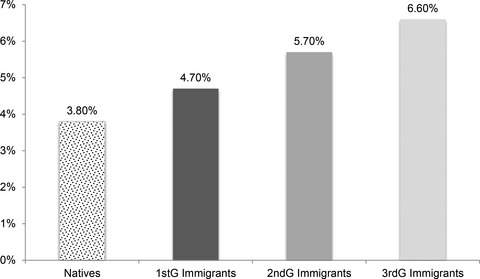
In the USA, compared to natives, AUDs are less frequent in first-generation immigrants (FGIs), whereas the rates of AUDs in subsequent generations tend to progressively align with the general population. This is what is called an ‘immigrant paradox’. In contrast, in our French data, both raw (see figure) and multivariate comparisons show that FGIs and natives exhibit no difference in the prevalence rate of AUDs, while second- and even more third-generation immigrants exhibit an increased prevalence of AUDs.
Parental Monitoring and Alcohol Use Across Adolescence in Black and White Girls: A Cross-Lagged Panel Mixture Model
- Pages: 1144-1153
- First Published: 09 April 2017
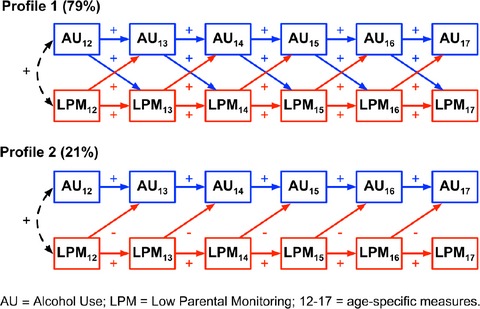
Analysis of data from 1,634 female adolescents (58% black) yields 2 discrete longitudinal patterns (ages 12 to 17) of codeveloping alcohol use and parental monitoring: one with stable bidirectional and autoregressive links (79%) and another in which alcohol use has no influence on subsequent parental monitoring (21%). Those in the smaller profile were, at age 12, more likely to have received public assistance, resided in single-parent households, reached puberty, and experienced conduct problems. Notably, race was not associated with group membership probabilities.
Eveningness and Later Sleep Timing Are Associated with Greater Risk for Alcohol and Marijuana Use in Adolescence: Initial Findings from the National Consortium on Alcohol and Neurodevelopment in Adolescence Study
- Pages: 1154-1165
- First Published: 19 April 2017
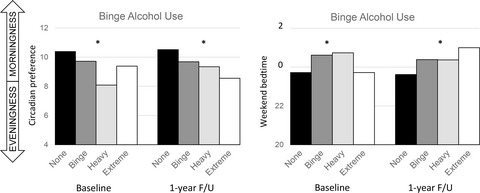
Here, we examined whether sleep timing and other sleep characteristics were associated with concurrent or subsequent substance involvement in 729 adolescents from the National Consortium on Adolescent Neurodevelopment and Alcohol study. After accounting for covariates, greater eveningness (later preferred sleep timing; left panel) and later bedtimes (right panel) were associated with more extreme binge alcohol use both at baseline and at the 1-year follow-up. Eveningness and sleep timing may be under-recognized risk factors and potential intervention targets for adolescent alcohol misuse.
Behavior, Treatment and Prevention
The Public Stigma of Birth Mothers of Children with Fetal Alcohol Spectrum Disorders
- Pages: 1166-1173
- First Published: 30 March 2017
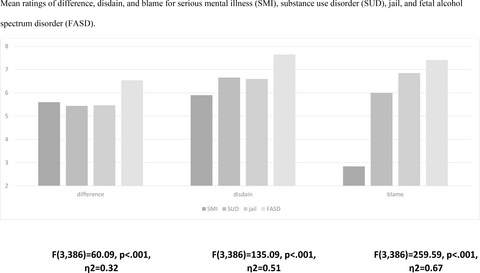
We examined whether there are stigmatizing attitudes about biological mothers of children with FASD in a crowdsourced sample. Data showed that participants viewed mothers of children with FASD as more different, disdained, and responsible than women with SMI, SUD and jail experience. Results supported the notion that mothers of children with FASD are highly stigmatized for their past behavior. It also suggested that the public might discriminate against this population.
“This Treatment Can Really Help Me”—A Longitudinal Analysis of Treatment Readiness and Its Predictors in Patients Undergoing Alcohol and Drug Rehabilitation Treatment
- Pages: 1174-1181
- First Published: 03 April 2017
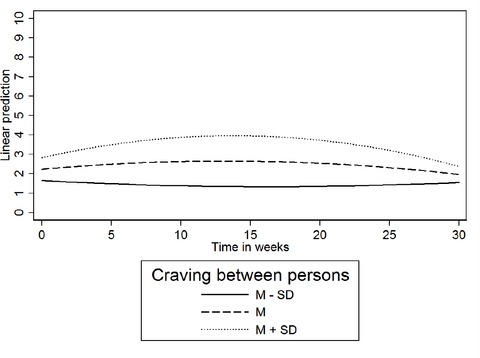
The present study assessed treatment readiness in the course of an in-patient rehabilitation program for alcohol- and drug-dependent clients. It became evident that most of the variance in treatment readiness was between individuals, whereas a smaller part was variance between measurement occasions. Temporal changes thus only played a subordinate role, whereas differences between individuals were more important. An important factor showing both main and interaction effects on treatment readiness was craving.
Preventing Alcohol-Exposed Pregnancies: A Randomized Controlled Trial of a Self-Administered Version of Project CHOICES with College Students and Nonstudents
- Pages: 1182-1190
- First Published: 07 April 2017

This figure compares reduced risk outcomes (reduced alcohol use and/or effective contraception) for preventing alcohol-exposed-pregnancies (AEP) for the current study, Project Healthy CHOICES (PHC), and six other CHOICES-like RCTs (experimental and control groups combined). The highest reduced risk outcomes occurred for students who received a motivational feedback intervention. The results of this study suggest that disseminating low-cost, informational brochures in health-care settings where women seek services could prevent AEPs. For college students, effective contraception was the most common prevention strategy.
Alcohol Demand, Future Orientation, and Craving Mediate the Relation Between Depressive and Stress Symptoms and Alcohol Problems
- Pages: 1191-1200
- First Published: 12 April 2017
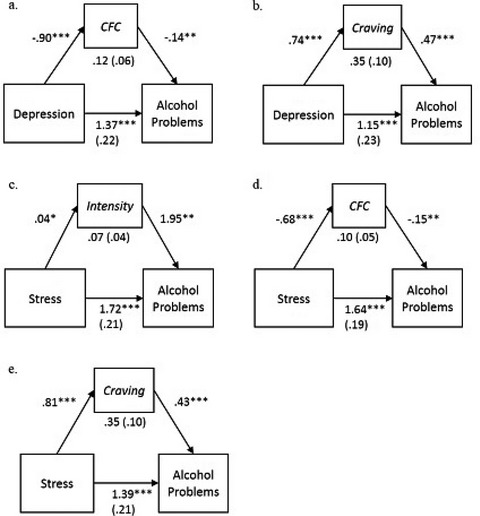
Regardless of actual consumption level, gender, or race, college students with elevated depression or stress experience greater alcohol incentive salience and are less future time oriented, which in turn may lead to greater alcohol problems. Interventions targeting alcohol use and problems in heavy drinking college students may be improved by including elements that both increase future time orientation and decrease alcohol incentive salience. Note. CFC = Consideration of Future Consequences; Intensity = Alcohol Demand Intensity (from a hypothetical alcohol purchase task, the number of drinks consumed if the price were $0).
A Double-Blind Randomized Placebo-Controlled Trial of Oral Naltrexone for Heavy-Drinking Smokers Seeking Smoking Cessation Treatment
- Pages: 1201-1211
- First Published: 12 April 2017

This randomized placebo-controlled trial tested the efficacy of daily 50 mg oral naltrexone for reducing drinking in 150 heavy drinkers receiving smoking cessation treatment that also included counseling on alcohol reduction. Although participants reduced drinking substantially during follow-up, naltrexone compared to placebo did not yield significantly greater reductions in percent heavy drinking days (effect size d = −0.04, 95% CI [−0.30, 0.22], p = 0.76) or greater smoking abstinence (odds ratio = 0.93, 95% CI [0.46, 1.86], p = 0.83).
The Modulation of the Startle Reflex as Predictor of Alcohol Use Disorders in a Sample of Heavy Drinkers: A 4-Year Follow-Up Study
- Pages: 1212-1219
- First Published: 11 May 2017
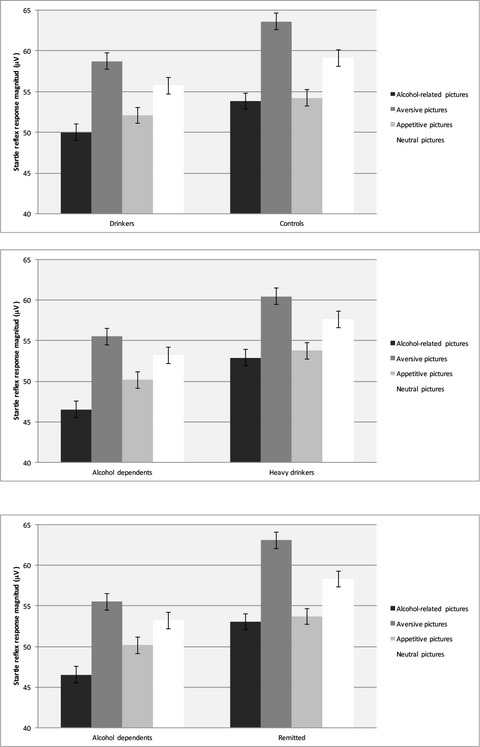
The participants are 239 men with a heavy-drinking profile who had not received previous formal treatment for Alcohol Use Disorder (AUD). Results show that in comparison with participants remaining as heavy drinkers and remitted at 4-year follow-up, alcohol-dependent subjects show an attenuated startle reflex response to alcohol-related, aversive, appetitive and neutral pictures. The predictive analysis shows that the startle reflex response to alcohol-related and aversive pictures are significant predictors of alcohol-dependence status at the follow-up 4 years later.
The Validity of the Montgomery–Asberg Depression Rating Scale in an Inpatient Sample with Alcohol Dependence
- Pages: 1220-1227
- First Published: 19 April 2017
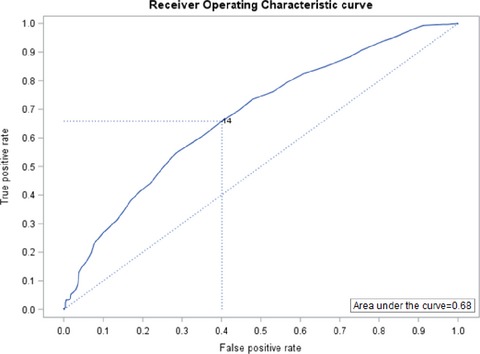
No studies have examined the validity of the Montgomery-Asberg Depression Rating Scale (MADRS) versus DSM-IV Structured Clinical Interview (SCID)-based diagnosis of depression in alcohol-dependent inpatients. Receiver Operating Characteristic curve demonstrated an area under of the curve of 0.68 for the MADRS compared to the SCID-based clinical diagnosis of a depressive disorder, with an optimum threshold of 14 using the Euclidean distance. In summary, the MADRS demonstrated low overall accuracy relative to the SCID-based clinical diagnosis of depression in alcohol-dependent inpatients.
Intoxication-Related Alcohol Mixed with Energy Drink Expectancies Scale: Initial Development and Validation
- Pages: 1228-1238
- First Published: 19 April 2017
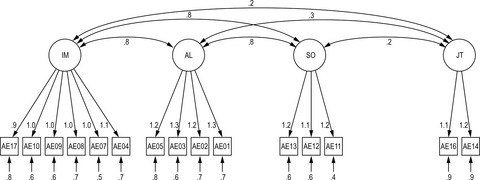
Use of alcohol mixed with energy drinks (AmEDs) is linked with elevated risks for a constellation of problem behaviors. These risks may be conditioned by expectancies regarding the effects of AmED intoxication. In this study, we introduced a new instrument, the four-factor Intoxication-Related AmED Expectancies Scale (AmED_EXPI). Confirmatory factor analysis demonstrated the AmED_EXPI to be psychometrically reliable, and its utility was confirmed by prospectively predicting initiation or continuation of AmED use in a diverse national sample of U.S. young adults.





